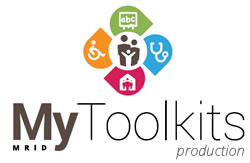Many people – health service consumers, carers, clinicians, allied health professionals, disability service providers and others – are interested in the idea of person-centred care and Co-Design, but might not know how or where to begin.
Building Co-Design into the development of a new health service or existing service may involve gradual stages. Initially, it may be useful to focus on one aspect of service delivery. For example, Co-Design projects may address a health service’s intake processes, or review clinical procedures for improvement. Such pilot projects are invaluable, and lessons learned can then guide practices and be expanded into other aspects of service delivery.

An important first step in Co-Design is creation of a transparent framework that everyone involved understands and can commit to. This framework outlines what to expect, role allocation and how processes will work.
Things to consider at the beginning of a co-design project:
- Who will be involved?
- Consumers or carers and health professionals working as equal partners
- What are the aims?
- What is the shared goal?
- What is the specific aim of the current project?
- What are the intended outcomes?
- How will information be shared?
- What information will be collected?
- What documentation will be created?
- Who will lead and facilitate the process?
- How will documentation be circulated and to whom?
- What will the consultation processes look like?
- What tools will be used to gather information?
- How will carer and consumer needs and priorities be determined?
- How will everyone be given the opportunity to express their ideas?
- How will agreement be reached on what happens next?
- What will the implementation process look like?
- How will agreed actions and new processes be trialled?
- What resources are required?
- How will ongoing review and evaluation take place?
- How will new processes be evaluated?
- How will ongoing feedback be collected and recorded (informally and formally)?
- Will subsequent reviews be carried out?
Lessons will be learned through the process of trialling Co-Design.
Questions to consider include:
- What worked and what didn’t?
- How could the collaboration be more effective next time?
- How will relationships between stakeholders be sustained long-term?
- What opportunities were created for ongoing collaboration and learning?
The Angelman Syndrome Association and the Angelman Syndrome Clinic worked in partnership from the outset using Co-Design principles. In our experience, these are key steps to developing effective Co-Design partnerships:
- Identify and seek out interested individuals from diverse backgrounds i.e. carers, clinicians, allied health professionals, disability service providers, etc.
- Arrange meetings, information-sharing events and social get-togethers.
- Find common ground and break down the barriers between different groups.
- Pro-actively engage carers or consumers in identifying priorities – what do they need?
- Guide carers or consumers through the process of organising a support group and engaging with clinicians.
- Use structured tools to gather input and feedback (e.g. focus groups, seminars, surveys).
- Continue to evaluate consumers’ ongoing needs and modify services based on their input and feedback.
- Tailor access to advice and services to the needs of consumer groups (e.g. creation of care pathways, liaison officers or specialised multidisciplinary clinics);
- Provide resources via the health system for consumer groups (e.g. assistance in sourcing funding through grants, specialist guest speakers for information sessions; in-kind support such as venues for meetings, tea and coffee making facilities, phones, photocopiers, fax machines etc.)
- Run collaborative events for mutual learning and development (e.g. workshops, seminars, research).
- Participate side-by-side as equals in both formal and informal activities (i.e. in both clinic-based and community-led events).




